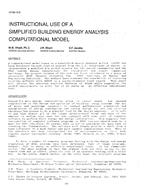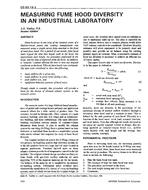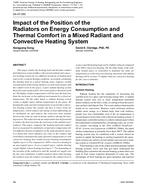Click here to purchase
The present study on determining the UA-value of a residential building is based on a simple heat-balance approach. It is quicker than any traditional long-term in-situ measurement method. The supply and return air temperatures, the relative humidity of the heating and cooling system, and the outdoor ambient temperature were measured overnight, allowing the UA-value to be calculated from the system’s on and off time periods.In addition to temperature loggers, two HFP01 heat-flux plates by HukseFlux® and two HFS-3 thin-film heat-flux sensors by Omega® were employed in this study. Both sensors were calibrated using commercially available polystyrene insulation sheathings with R-values of 1, 3, 5, 10, 15, and 20 hr-ft2-?F/Btu as standard references.The total UA-value was found to be 830 ± 10 Btu/hour-?F (or a thermal index of 6.1 ± 0.1 Btu/ft2-?F-day) by using the heat-balance method for this 3,290 ± 5 ft2 house located at latitude 38?N and longitude 78?W, inland of Zone 4. This value was then compared to the in-situ measured UA-value of 800 ± 10 Btu/hour-?F and a retracted UA-value of 840 ± 20 Btu/hour-?F based on the house’s 10-year average electricity consumption data, known as the Degree-Day Method.
Citation: ASHRAE/IBPSA-USA Bldg Simulation Conf, Sept 2018
Product Details
- Published:
- 2018
- Number of Pages:
- 8
- Units of Measure:
- Dual
- File Size:
- 1 file , 4.8 MB
- Product Code(s):
- D-BSC18-C077


